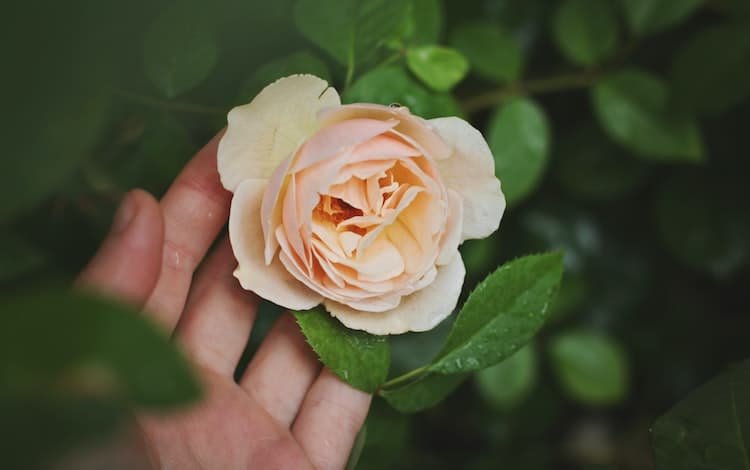Awareness of our mortality will not be something we commonly contemplate in today’s modern society. We are inclined to avoid this difficult yet vital topic for reasons which can be comprehensible. Contemplating death can spark feelings of fear or anxiety, which might be quite uncomfortable. Nonetheless, mindfulness of death is a robust practice that, when explored with care, can actually help us to live life more fully.
On this comprehensive guide to mindfulness of death, we’ll explore:
What Mindfulness of Death Is and Isn’t
To pay attention to our own mortality and the mortality of the whole lot around us is to pay attention to the fact of death. On one level, we’re all aware of this reality, and yet still, we frequently avoid enthusiastic about it. Practicing mindfulness of death is about sitting with this awareness in meditation or quiet contemplation. It’s about turning towards slightly than away from this often uncomfortable reality.
Mindfulness of death will not be grim, negative, morbid, or alarmist. In its true essence, awareness of the inevitability of death is about facing the character of reality. It involves acknowledging the impermanence of all things and sitting with this awareness.

Mindfulness of Death and Buddhism
Buddhism also makes note of 5 contemplations, or five remembrances. Death makes its appearance here, too. The five contemplations are:
This awareness of our impermanence is prime to Buddhist teachings. While these teachings might be startling to many, they’re worthy of consideration once we feel ready for them. Nonetheless, each one among us is on a distinct path and may explore these concepts in ways which can be supportive and inspiring. That is why care is crucial once we are exploring mindfulness of death meditation.


The Importance of Being Aware of Mortality
Awareness of our mortality is a core teaching of Buddhism, but why should we practice it? What are the advantages of being aware of the fact of death?
After we first begin exploring this subject, it might probably feel heavy, depressing, and unsettling. For some, mindfulness of death might be psychologically disturbing, which is why exploring it with care is of utmost importance.
Nonetheless, if we feel the decision to explore any such practice and achieve this in gentle ways, it should eventually lead us to greater life acceptance. We are going to begin to see that life and death are two sides of our existence. On this acceptance, we discover deeper peace and contentment with the natural flow of things.
Awareness of death sheds light on the undeniable fact that we cannot hold onto anything and that eventually we can have to let go. This awareness naturally helps to ease our attachments to things, which lessens the suffering that we experience. It may also enhance gratitude, wonder, and appreciation for all that we get to experience while we’re here.

– Mary Oliver, from When Death Comes-

Easy methods to Practice Mindfulness of Death With Care
When practicing mindfulness of death meditation, it is useful to start out gently. We don’t want to overwhelm or disturb ourselves in such a way that results in us running from the topic all together. To practice this way of mindfulness with care, you would possibly consider one among the next practices:
Nature Contemplation
Spend a while within the natural world, perhaps walking through a relaxing forest. Discover a plant that speaks to you, whether it’s a tiny seedling or a well-rooted tree. Consider the wonder and wonder of this plant – the undeniable fact that it began as a tiny seed and blossomed into this miraculous life form. Then, consider the undeniable fact that this plant will sooner or later die. When it does, it should shift into one other form, becoming nourishment for the soil and the following generation of plants.
Spend a while within the natural world, perhaps walking through a relaxing forest. Discover a plant that speaks to you, whether it’s a tiny seedling or a well-rooted tree. Consider the wonder and wonder of this plant – the undeniable fact that it began as a tiny seed and blossomed into this miraculous life form. Then, consider the undeniable fact that this plant will sooner or later die. When it does, it should shift into one other form, becoming nourishment for the soil and the following generation of plants.
Breath Awareness
Come into a cushty seated position. Close your eyes and ground into this practice for a couple of minutes of mindful respiratory. Once you’re feeling settled in your environment, consider the undeniable fact that any breath might be your last one. Savour each breath as if it were your last, harnessing appreciation for the gift of every full breath cycle.
Life and Death Contemplation
It’s also possible to meditate on death through direct contemplation on impermanence. Take your time to settle into a cushty seated position and once you feel grounded, begin to contemplate that the whole lot comes and goes. Consider the undeniable fact that change is the one thing constant about life. It will not be something we will outwit or outrun. Explore this contemplation with care, grounding through your breath many times. You need to use this worksheet on life and death as a guide.
As you practice any of those meditations or those to follow, you would possibly encounter strong and difficult emotions. If fear and anxiety arises, you possibly can practice mindfulness for death anxiety by releasing the contemplation and tuning into your body. Notice where you’re feeling the emotion and send it your loving kindness. You may do that by:

6 Mindfulness of Death Meditations
Should you feel drawn to deepen your awareness of death, you possibly can consider the next six mindfulness exercises to guide your inquiry. As you explore these, remember to take your time. The secret’s finding a balance between nurturing our psychological wellbeing while also pushing ourselves to enterprise into uncomfortable territory for private growth.
1. Acceptance of Death and Meaning of Life – Alan Watts
Philosopher, author, and speaker Alan Watts explores the natural cycle of life and death. The natural cycle of plants is just as natural because the cycle that we humans undergo. This talk invites us to shift our perception of death and to understand that it’s an inevitable a part of life.
2. Death As An Advisor To Life – Ram Dass
This video is a chat on death as being an advisor to life. From Wisdom 2.0 2016 in San Francisco, it offers wisdom from Roshi Joan Halifax, Frank Ostaseski, and Ram Dass. Within the words of Ram Dass, “The way you spend your life in each moment is the rehearsal for death. It’s called, ‘Be Here Now’.”
3. Nachiketa and the Lord of Death – Jack Kornfield
Jack Kornfield tells the story of Nachiketa and his journey to fulfill with the Lord of Death. This talk offers wisdom in its examination of Nachiketa’s journey. What can we take away from this ancient story?
4. On Death – Ajahn Amaro
Ajahn Amaro answers questions on death contemplation. He provides guidance as to how we will meditate on death using reflection, visualization, and other practices. A number of the practices highlighted on this talk are best suited to more advanced practitioners. Follow your intuition when selecting a practice to explore.
5. Meditation on Death – Bhikkhu Analayo
This guided meditation enhances our present moment awareness of the body before offering the reminder that this mind-body we experience will sooner or later die. It is a more advanced practice so it is very really useful that you just first familiarize yourself with the more basic mindfulness of death meditations.
6. Beyond Coping – A Study Guide on Aging, Illness, Death, & Separation by Thanissaro Bhikkhu
For people who prefer to learn through reading, this freely offered book is a study guide on aging, illness, death, and separation. It highlights passages from the Pali Canon and offers insight into how we will navigate these tougher human experiences.






